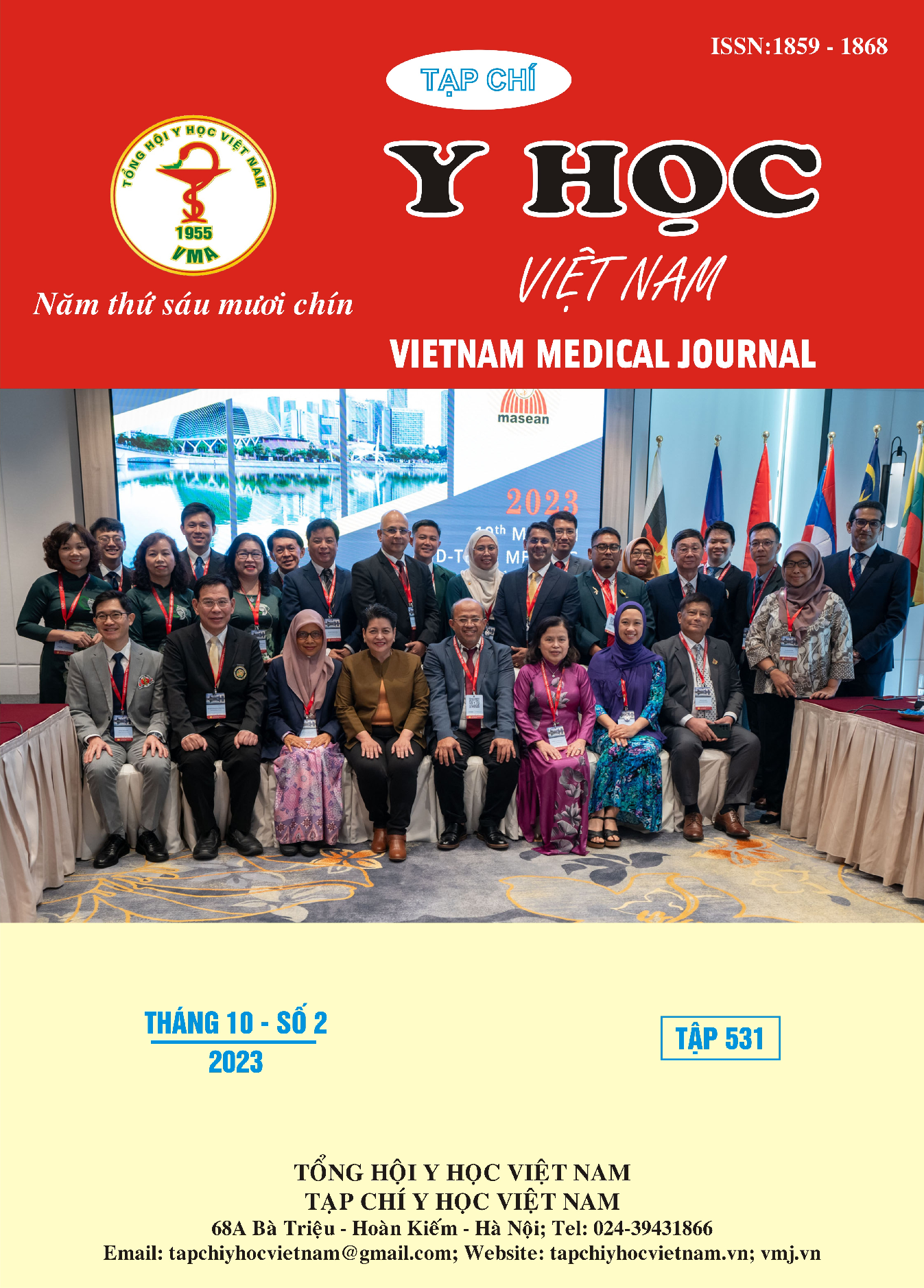DISTRIBUTION AND ANTIBIOTIC RESISTANCE CHARACTERISTICS OF PROTEUS SPECIES ISOLATED FROM MILITARY HOSPITAL 103
Main Article Content
Abstract
Objective: Study distribution and antibiotic resistance characteristics of Proteus species isolated from Military Hospital 103 in the period from 2014 to 2021. Subject and methods: This was a cross-sectional study. The subject of the study was Proteus species isolated from Military Hospital 103 in the period from 2014 to 2021. Results: The total number of Proteus species causing diseases isolated in the period of study was 99. Of which, the percentage of Proteus mirabilis was the highest, at 66.7%. The proportion of Proteus isolated from patients in the age group of ≥60 years was the highest among other age groups, at 62.6%. The rate of Proteus causing disease in female (67.7%) was approximately two time higher than that in male (32.3%). The proprotion of Proteus isolated from specimen from respiratory tract, pus, and blood was the highest among specimens, at 26.3%, 24.2%, 23.2%, respectively. The percentage of Proteus isolated from the intensive care unit was the highest among hospital wards, at 35.4%. Proteus was the most resistant to Ampicillin (92,4%), Trimethoprim/Sulfamethoxazole (87,3%), Ciprofloxacin (73,8%) and least resistant to Amikacin (7,1%), Ertapenem (9,7%), Meropenem (10,2%). Conclusion: P. mirabilis was the most common bacterial species among genus of Proteus causing diseases at Military Hospital 103 from 2014 to 2021. Proteus was mostly isolated from the intensive care unit, patients in the age group of ≥60 years, and specimen from respiratory tract. Proteus was the most resistant to Ampicillin, Trimethoprim/ Sulfamethoxazole, and Ciprofloxacin and least resistant to Amikacin, Ertapenem, and Meropenem.
Article Details
Keywords
Proteus, Proteus mirabilis, antibiotic resistance, bacteria
References
2. M. F. Lin, et al., Antimicrobial Susceptibility and Molecular Epidemiology of Proteus mirabilis Isolates from Three Hospitals in Northern Taiwan. Microb Drug Resist,(2019). 25(9), 1338-1346.
3. C. M. O'Hara, F. W. Brenner, and J. M. Miller, Classification, identification, and clinical significance of Proteus, Providencia, and Morganella. Clin Microbiol Rev,(2000).13(4), 534-46.
4. Nikita Sharma Nita Pal*, Rajni Sharma, Saroj Hooja, and Rakesh K Maheshwari, Prevalence of Multidrug (MDR) and Extensively Drug Resistant (XDR) Proteus species in a tertiary care hospital, India. International Journal of Current Microbiology and Applied Sciences,(2014). 3.
5. Clinical Microbiology Procedures Handbook. 2016.
6. Clinical Lab Standards Institute, Performance Standards for Antimicrobial Susceptibility Testing (M100). 33 ed. 2023: Clinical Lab Standards Institute.
7. H. H. Kumburu, et al., Patterns of infections, aetiological agents and antimicrobial resistance at a tertiary care hospital in northern Tanzania. Trop Med Int Health,(2017). 22(4), 454-464.
8. M. Caubey and M. S. Suchitra, Occurrence of TEM, SHV and CTX-M beta Lactamases in Clinical Isolates of Proteus Species in a Tertiary Care Center. Infect Disord Drug Targets, (2018). 18(1), 68-71.


